
|
French Champagne Tourney
|
|
Theme
Proof Games with reciprocal interferences (a piece A interferes with a piece B and the piece B interferes with the piece A). "The piece A interferes with the piece B" means that the piece A moves to a vacant square, so that if A were not there, at some time of the solution, B could capture the opposite King.
|
| Michel Caillaud Original (Eretria 2005) |
Thierry Le Gleuher Phénix 1995 |
||||||
 |
 |
||||||
| PG in 9.0 | (14+13) | PG in 23.5 | (16+12) | ||||
Example I : Michel Caillaud Example II : Thierry Le Gleuher |
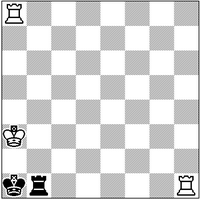
|
Some introductory remarks about my approach of judging thematic tourneys. A common thought is that more times the theme is the better. Thus the "fantastic" 2-mover given here (1.Tc1? Txc1! etc, 1.Tah8! Tc1 2.Txc1# etc) should score highly (with 5-fold exposition) in a tourney asking for the (difficult) Vladimirov theme. Somewhere the interest of the realization has to be considered and not only the number of thematic lines... |
||
#2 |
(3+2) |
||
| It has been asked that the judge should precise in the announcement exactly what he wants for problems to be at the top of the award. This is not the spirit of the Champagne Tourney that aims to be an open competition letting the greatest possible field to composers (hence the acceptance of fairy proof games). Moreover, in usual lack of inspiration for finding themes, the judge picked the theme after the Messigny 2005 one, without precise idea of what composers should do with it... Some general rules ("apparent promoted force should be avoided", etc) could be given, but as the results of last year's tourney already showed, composer's imagination is better appreciated here than strict application of such rules... After selecting the theme, I looked for existing realizations. They showed different possible approaches of the theme. |
Gianni Donati Thema Danicum 2004 |
|
||
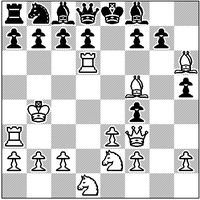
|
1.g3 Sf6 2.Lh3 Se4 3.Lf5 Sxd2 4.Kxd2 h5 5.Kc3 Th6 6.Kb4 Td6 7.Lh6 e6 8.e3 Le7 9.Df3 Lf6 10.Se2 Ld4 11.Td1 e5 12.Td3 Tg6 13.Ta3 Tg4 14.Sbc3 Tf4 15.gxf4 exf4 16.Td1 Lf6 17.Td6 Le7 18.Sd1 Lf8 |
||
PG in 18.0 |
(14+14) |
||
| In fact, in many entries, the thematic moves are just there on the shortest way to the final position, and very often one appreciates the ability of the composer to have them entered in the problem more than the content of the problem itself; generally (that is with the exception of special tasks, of course) I considered that extra moves, such as Indian critical moves, added value to the theme. Another approach found was the combination of the theme with other ones (Phenix with Indian manoeuvres, mono-colored: Reto Aschwanden, 2-4 Prize StrateGems 2002; Gianni Donati, bi-colored: Unto Heinonen, 3 Prize StrageGems 2004). Some other combinations will be found here. 53 problems (a record!) were submitted by 20 composers (not a record!). Some composers were very prolific. Andrey Frolkin submitted 19 entries, all of them in collaboration (this is a record for Champagne!) and will maybe lead to another limitation next year! 2 were cooked, 2 were not thematic and 1 was withdrawn by its author. Due to the important number of entries, I proceeded to severe elimination and for each thematic idea chose only one or two compositions which I considered the most successful, so that the award could show the broadest set of ideas. Doing so, some good problems which were at the level of HM's or Commendations were excluded. To accompany problems and help to see their thematic content, I used the presentation found in Kostas Prentos' submissions, expliciting thematic lines in the order of their appearance. |
|
Andrey Frolkin Kostas Prentos Sp Pr Champagne Ty Eretria 2005 |
Dirk Borst 1 Pr Champagne Ty Eretria 2005 |
Reto Aschwanden 2 Pr Champagne Ty Eretria 2005 |
|||
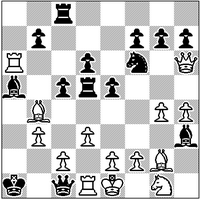 |
 |
 |
|||
PG in 19.0 |
(14+14) |
PG in 17.0 |
(14+15)
|
PG in 18.0 |
(14+14)
|
|
Special Prize: Andrey Frolkin (Ukraine) & Kostas Prentos (Greece) 1st Prize: Dirk Borst (Netherlands) 2nd Prize: Reto Aschwanden (Switzerland) |
|
Éric Pichouron 3 Pr Champagne Ty Eretria 2005 |
Kostas Prentos Andrey Frolkin 4 Pr Champagne Ty Eretria 2005 |
Reto Aschwanden 5 Pr Champagne Ty Eretria 2005 |
|||
 |
 |
 |
|||
PG in 20.0 |
(14+13) |
PG in 19.0 |
(13+15)
|
PG in 16.0 |
(14+14)
|
|
3rd Prize: Éric Pichouron (France) Dedicated to Gaëlle and Nicolas 4th Prize: Kostas Prentos (Greece) & Andrey Frolkin (Ukraine) 5th Prize: Reto Aschwanden (Switzerland) |
|
Anatoly Vasilenko Andrey Frolkin Sp HM Champagne Ty Eretria 2005 |
Andrey Frolkin Kostas Prentos Sp HM Champagne Ty Eretria 2005 |
Rustam Ubaidullaev 1 HM Champagne Ty Eretria 2005 |
|||
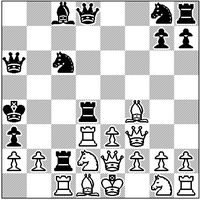 |
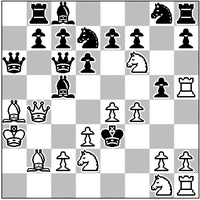 |
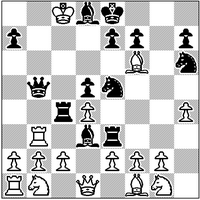 |
|||
PG in 23.5 |
(16+12) |
PG in 22.5 |
(15+16)
|
PG in 17.0 |
(16+13)
|
|
Special Honourable Mention: Anatoly Vasilenko & Andrey Frolkin (Ukraine) Special Honourable Mention: Andrey Frolkin (Ukraine) & Kostas Prentos (Greece) 1st Honourable Mention: Rustam Ubaidullaev (Russia) |
|
Kostas Prentos Andrey Frolkin 2 HM Champagne Ty Eretria 2005 |
Andrey Frolkin Kostas Prentos Mikhail Marandyuk 3 HM Champagne Ty Eretria 2005 |
Andrey Frolkin Kostas Prentos 4 HM Champagne Ty Eretria 2005 |
|||
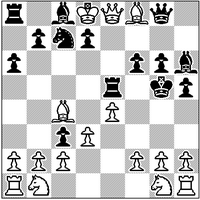 |
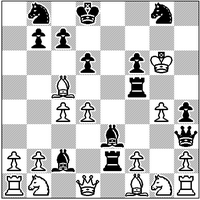 |
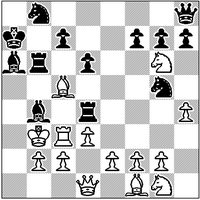 |
|||
PG in 17.5 |
(16+14) |
PG in 16.5 |
(15+13)
|
PG in 17.5 |
(14+13)
|
|
2nd Honourable Mention: Kostas Prentos (Greece) & Andrey Frolkin (Ukraine) 3rd Honourable Mention: Andrey Frolkin (Ukraine), Kostas Prentos (Greece), Mikhail Marandyuk (Ukraine) 4th Honourable Mention: Andrey Frolkin (Ukraine) & Kostas Prentos (Greece) |
|
Andrey Frolkin Kostas Prentos 5 HM Champagne Ty Eretria 2005 |
Allan Bell Sp Comm Champagne Ty Eretria 2005 |
Rustam Ubaidullaev Igor Vereshchagin 1 Comm Champagne Ty Eretria 2005 |
|||
 |
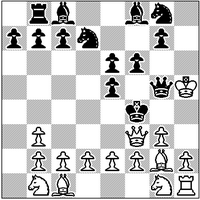 |
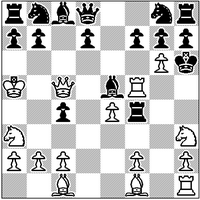 |
|||
PG in 24.0 |
(15+12) |
PG in 15.0 |
Isardam (15+14) |
PG in 18.0 |
(15+16)
|
|
5th Honourable Mention: Andrey Frolkin (Ukraine) & Kostas Prentos (Greece) Special Commendation: Allan Bell (Ireland) 1st Commendation: Rustam Ubaidullaev & Igor Vereshchagin (Russia) |
|
Andrey Frolkin Kostas Prentos 2 Comm Champagne Ty Eretria 2005 |
Paul Raican 3 Comm Champagne Ty Eretria 2005 |
Anatoly Vasilenko Andrey Frolkin 4 Comm Champagne Ty Eretria 2005 |
|||
 |
 |
 |
|||
PG in 16.5 |
(12+15) |
PG in 19.0 |
(12+15)
|
PG in 13.5 |
(16+15)
|
|
2nd Commendation: Andrey Frolkin (Ukraine) & Kostas Prentos (Greece) 3rd Commendation: Paul Raican (Romania) 4th Commendation: Anatoly Vasilenko & Andrey Frolkin (Ukraine) |
| Marek Kolčák 5 Comm Champagne Ty Eretria 2005 |
Jonathan Mestel 6 Comm Champagne Ty Eretria 2005 |
||||||
 |
 |
||||||
| PG in 12.0 | (15+13) | PG in 4.5 | (15+15) | ||||
|
5th Commendation: Marek Kolčák (Slovakia) 6th Commendation: Jonathan Mestel (Great Britain) |